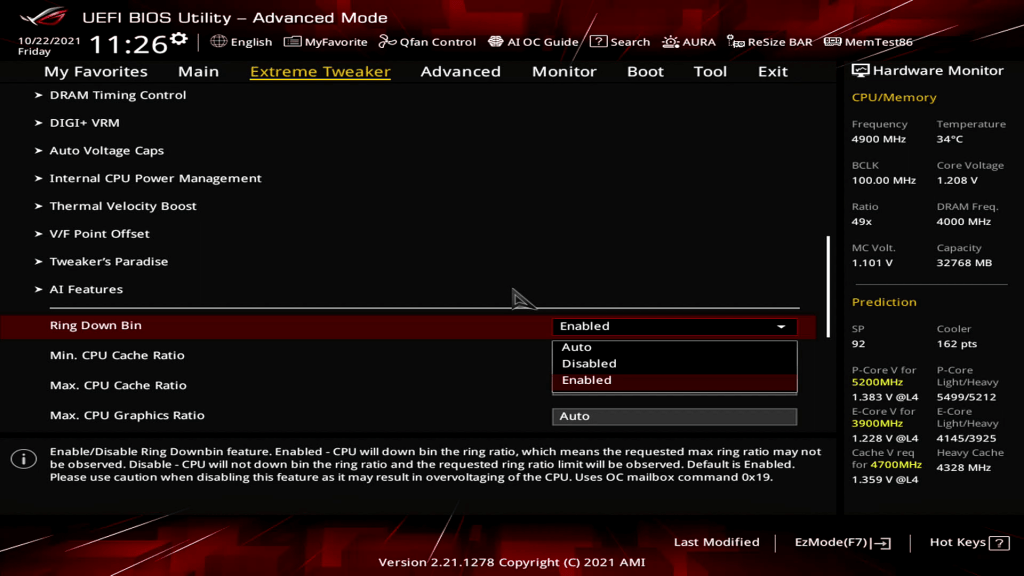Intel Ring Downbin, or Ring to Core Ratio Offset, is power management feature that reduces the Ring ratio compared to the Core ratio.

Intel Ring Downbin was first introduced on Kaby Lake processors in January 2017. In a typical situation, you would see the ring down bin of 3, meaning that if the CPU cores are running at 4.5GHz the system would configure the Ring ratio to 4.2 GHz.
While not technically an overclocking feature, Ring downbin is an important feature to keep in mind when trying to achieve high performance. The CPU Ring is the bus that connects all different parts of the Intel CPU to transfer data between different cores, between cores and memory, and between cores and other parts of the system.
The Ring has its own voltage-frequency curve, meaning it will request a certain voltage when running a certain frequency. However, the CPU cores and Ring share the same voltage plane. So, if you force a specific Ring frequency that requires a higher voltage, is it very possible that would result in effectively overvolting the CPU cores. That in turn would increase the temperatures and power consumption.
I highlighted this particular issue in SkatterBencher #52 when overclocking the Core i9-13900K P-cores.
On Alder Lake, the default ring frequency is significantly affected by E-cores. When only P-cores are enabled, the ring frequency is 4.7GHz. However, when E-cores are enabled (and active) the ring frequency drops to 3.6 GHz.
Disabling ring to core ratio offset is specifically important when manually overclocking as it ensures that your manually set ratio for the ring is always applied.